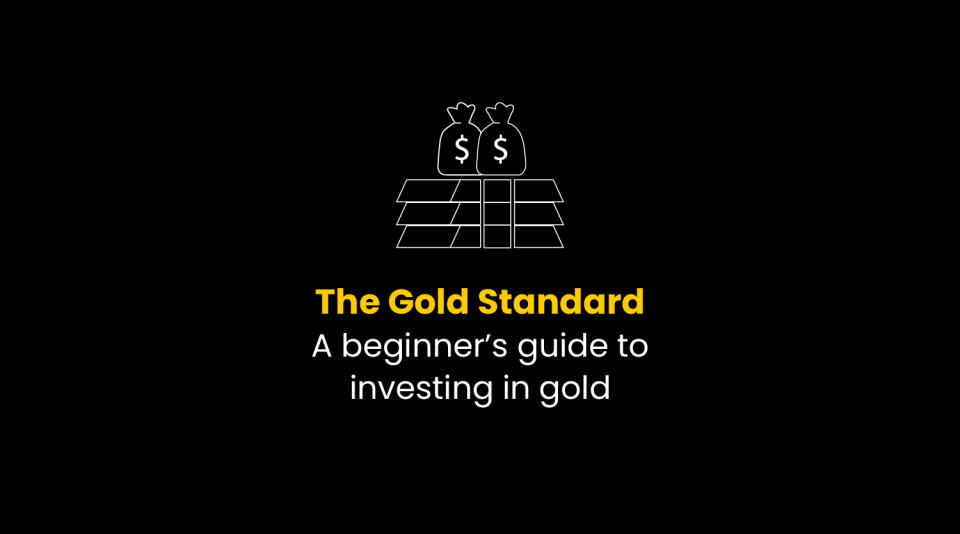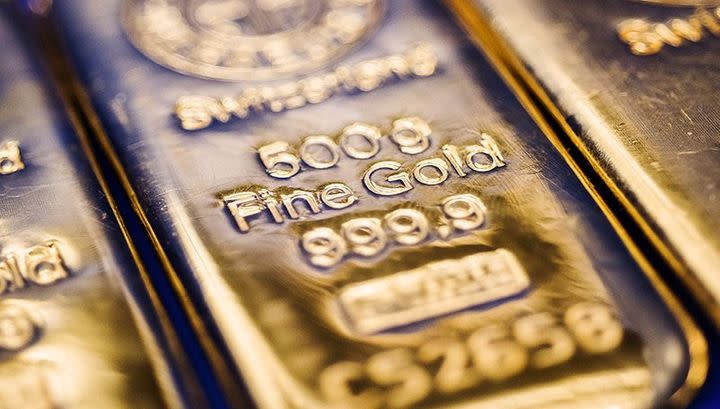The gold standard: A beginner's guide to investing in gold

SINGAPORE (Apr 6): Gold has been regarded as a valuable commodity since the beginning of civilisation due to its beauty, sheen, and perceived value. Whether as currency, or in the form of treasure, gold has been at the forefront of many legends and inspirational stories.
In fact, it wasn’t until the 20th century that fiat currency or money was declared as legal tender, and became the de facto means of exchange.
What is gold?
Gold is, in essence, a precious metal. It is also considered a commodity among the major asset classes.
People buy into gold via several avenues, including physical gold, which can come in the form of jewellery, or gold coins or bars. This is also known as gold bullion.
Then, there are gold savings accounts, where investors buy Gold Linked Notes, instead of actual gold. These accounts can be found in most banks.
You can also invest in gold futures, ETFs, and stocks of gold mining companies.
Gold futures are financial contracts, where buyers and sellers trade gold at an agreed-upon price to be transacted at a future date.
Gold ETFs are traded like other ETFs on the stock market. Click here for a more in-depth explanation on ETFs, or exchange-traded funds.

Why invest in gold?
Gold is regarded as a popular asset to have in any portfolio, as it can be used to offset or reduce price risks when stock prices dip. This is also known as hedging.
As gold prices are generally pegged against the US dollar, gold is also seen as a hedge against inflation.
A weaker US dollar translates to stronger currencies in other countries, thereby reflecting stronger purchasing power. When that happens, demand for commodities increases, which drives prices up.
That said, the relationship doesn’t always have to stay that way. Gold prices and a strong US dollar can rise together when investors are seeking safe havens, due to crises around the world.
In a report released by DBS’s Chief Investment Office (CIO) in 1Q2020, DBS strategist Joanne Goh says gold prices are affected as “gold is now deemed as a USD proxy where non-USD domiciled holders will use gold as an alternative to USD, especially when their currencies are depreciating”.
Prices for gold in the market are, like the rest of the market, subject to speculation, as well as supply and demand.

How are gold prices determined?
Howie Lee, an economist at OCBC Bank, cites four factors that impact gold prices: “Inflation expectations, high interest rates, the strength of the US dollar, and fear sentiment,” he says in an OCBC Insights video on Feb 11, 2020.
The four factors are further explained:
- Inflation expectations
Due to its relationship with the US dollar, gold prices will rise when “there are fears of inflation” amidst a weakening US dollar, says Lee.
- Interest rates
With high interest rates, come equities with higher yields, which make them more attractive to investors than gold. Therefore, a lack of demand will cause gold prices to fall.
The way Lee sees it, gold is an asset that does not bring in income. This means that “one can only benefit from gold via capital gains. When interest rates are high, the appeal of coupon-yielding bonds become more attractive than gold, causing gold prices to fall,” he says.
- Strength of the US dollar
Gold is usually quoted in US dollars, and as more gold buyers can be found in Asia, gold is considered cheaper with stronger currencies pegged against the US dollar.
“[Gold’s] largest consumers are found in China and India, in the form of jewellery purchase. A weaker dollar gives more purchasing power to Chinese and Indian buyers. Our view is that the US dollar could cede some strength to Asian currencies this year, as stability from the trade truce (link https://www.theedgesingapore.com/flash-categories/us-china-trade-war) results in a pick-up in economic activity,” observes Lee.
- Fear sentiments
Events such as recession, wars, and pandemics cause fear on the ground. And when that happens, “people rush to buy gold”, as fiat currency is perceived as being less trustworthy.
“There have been worrying developments on many fronts, including US-Iran tensions, and the Wuhan coronavirus. They are keeping fear sentiments high. Depending on how these events unfold, they could send gold prices either way,” he adds.

The downside to investing in gold
However, all that glitters isn’t gold. While gold may be seen as a safe haven asset, it isn’t always a good investment, either.
Here’s why:
- It is not a growth stock
Gold does not provide any dividends or yields, and it doesn’t produce anything that will lead to anything we can use, except jewellery.
- Price affected by sentiments
The price of gold is driven up or down by market sentiments. That is, it doesn’t have an innate value, except for the price investors place on it.
- Gold is a volatile asset
Commodities are the most volatile asset class, as prices constantly rise and fall due to supply and demand, geopolitical reasons, speculation, and economic developments.
Bottom line? Gold is still a good hedge against uncertain times, and a bearish stock market. However, take care not to put all your money – or even a large sum – in gold, as that is simply a buffer stock, so to speak. How much gold should you have in your investment portfolio then?
A general rule of thumb is to have about 5-10% of your portfolio in gold.
For more stories on investing 101, click here. For more news and investment insights, see our print edition here.
See also:
To sell, hold – or buy even more? What should investors do amid falling stock prices?
Investors stick to their guns on gold to reap last-minute payoff
All that glitters is gold, in these uncertain times

 Yahoo Finance
Yahoo Finance 